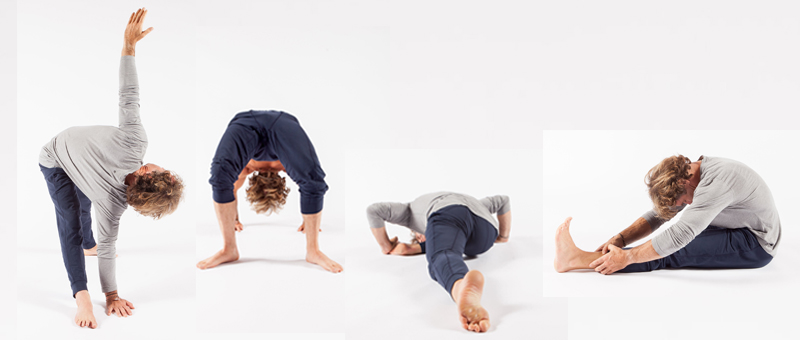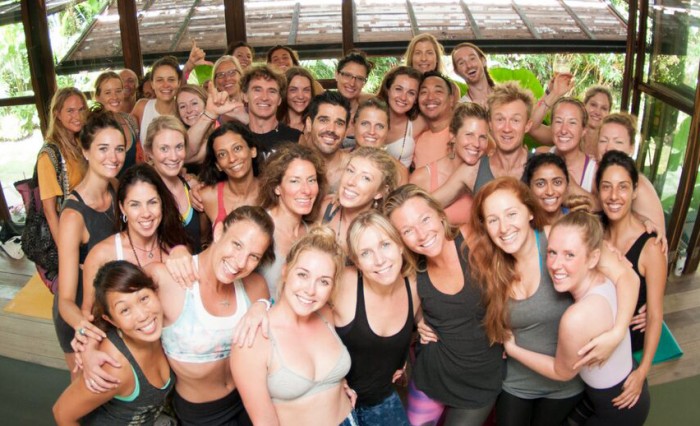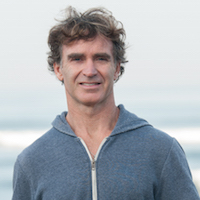
When it comes to yoga, my strategy is simple: “No pain…no pain!”
Yet this past April I voluntarily entered the zone of pain under hot lights at a West Oakland photography studio.
My goal was to take 260 photos that visually depict common alignment mistakes in 50 different yoga asanas for our Blissology Yoga Teacher Training manual.
I decided to touch the stove and found out it is hot. Really hot!
It’s not just theoretical—yoga can hurt.
A few years ago now many of us in the yoga community got our Mula Bandhas* in a knot over William J. Broad’s article “Yoga can wreck your Body” in The New York Times. To many, that was like an avid sports fan crying foul on his or her home team instead of cheering them on.
I wasn’t shocked at all. I have always maintained that improperly performed yoga can hurt you more than most nasty UFC jujitsu submission holds.
Like a lot of yoga teachers, I spend a lot of time teaching people how to do the poses with safe joint alignment. I thought about how great it would be if the students had a visual resource of these mistakes that they could refer to during our training and in the months and years following.
There are two main things that injure people in yoga:
1) The first is being so driven to get into a pose that we no longer listen to bodily feedback.
2) The second is lack of knowledge about improper stresses to the joints and soft tissues.
Even though yoga-instructors continually use the cliché to “check our egos at the door,” I wish I could share how many of my peers I’ve seen badly injure themselves posing for national yoga magazine covers! I’ve also seen the drive of perfectionism in the eyes of many who come to class intent on copying the Instagram yoga celebrities. There is no doubt, drive is alive in the yoga world.
As Joel Kramer wrote his 1989 Yoga Journal article, Yoga for Self Transformation, there are two types of yogis: Pushers and Sensualists. I think his point can best be understood if we consider goals and feedback.
A Pusher has a goal to go deeper in a pose and when he or she faces unpleasant feedback, they push past these sensations in order to “get the pose.”
A Sensualist also has a goal, but he or she does not push past unpleasant bodily feedback in order to go deeper. The breath, the relaxed nervous system, the pain free body is key. The mind is not some malevolent dictator of the body. Instead there is a body and mind democracy.*
The prevailing athletic hero in modern culture is of someone who can push past pain to finish that marathon or play for his team in the face of injury. So the idea of not pushing is a radical mental shift for us.
“What do you have in mind today?” The photographer asked as I laid my mat out on the white backdrop. She was used to shooting glamorous yoga photos of elegant contortions and well-liked Instagram poses.
“You aren’t going to believe this…” I started, not sure about how to start describing the task at hand, “I am updating our teaching training manual and I have a list of 260 common mistakes people make in yoga poses.”
She seemed surprised, yet intrigued.
We set up and Michelle, my assistant, read through the checklist.
“Downward Dog with collapsed wrist arches.” She said.
Click, click.
“Next one is Downward dog with shrugged shoulder blades.”
Click.
And so went the afternoon. In our four hour session, we shot everything from Pigeon Pose with the shin and thigh bone not in line, Camel Pose with squeezed butt cheeks and lazy feet, half spinal twists with the sacrum misaligned and “Wild Things” with torqued shoulder joints until all 260 mistakes had been documented.
In my quest to document these mistakes I had to override my self-protecting good habits I had learned. Instead, I reminded myself how much this project could help thousands of others protect their bodies in yoga asana.
A lot of my passion for alignment stems from the knee injury I got in 2000 after a pretty brutal adjustment in Marichyasana D by the late Pattabhi Jois. I should have known better but I trusted the guru. Maybe I fell into the pushing category back then, but the result was that I couldn’t walk for four months.
It turned out to be the greatest gift of my career because I sought out amazing teachers and committed whole-heartedly to learning and developing methodologies that allowed yogis to go deep in yoga asana with no harm.
My knee healed after many long years. I have never experienced even small yoga injuries for a decade and a half. Thanks to intelligent yoga alignment, at 46, I would never trade my body for the one I had at age 21.
However, the next day after my shoot, that old knee injury came back, my shoulders were sore at night and I slept on aching back. I woke up every 30 minutes in pain. I felt old and broken.
The soreness persisted several weeks before our month-long teacher training in Bali. It wasn’t just the physical pain that kept me up then; I lay awake fearful about how I was even going to lead so much asana.
Slowly and steadily, I healed. As much as this project reacquainted me with how misaligned yoga poses hurts, I also experienced first hand how properly aligned yoga can heal.
The three keys to my recovery were:
1) I just did slow flow vinyasa yoga every day and gave up advanced poses in my practice.
2) I cut back the number of poses and held poses for loner with my best alignment.
3) I did a lot of breath work and visualization to get energy flowing. I stayed mindful and positive.
By the time the Bali training had started I went from feeling I was 80 years old to 8 years old, physically. I was so thankful to all the lineage of teachers I belong to and what yoga can really do to heal. I can’t wait to have all these photos in a book one day.
The best part for me is that injury free yoga asana forces us to balance the driven part and the kind part of ourselves.
The asana practice is the start of the process not the end. We are hardwiring our minds for all of our relationships. We are developing an approach not just to more sustainable bodies but also creating communities and a relationship with the planet will be more sustainable.
Footnotes
*1: I have a feeling in the back of mind that I read this quote somewhere but after 30 minutes on google trying to find it, I give up. If I said it, great. If I ripped your quote off, I am sorry. Let me know and I will credit you.
*2 Another teacher of mine, Susan Apposhyan from Body-Mind Psychotherapy uses the analogy of the mind like a dictator and the goal is for body-mind democracy. It just overlapped well with Joel’s idea.
Author: Eoin Finn
Editor: Emily Bartran
Photos: Author’s Own



Read 9 comments and reply